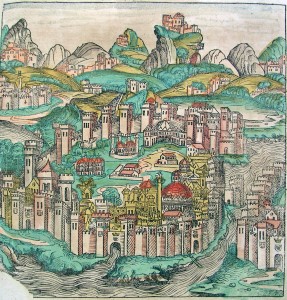The Jewish Queen of Armenia
Helena of Adiabene (d. 56 CE) was the Queen of the Persian-Armenian kingdom of Adiabene, a vassal of the Parthian Empire. Essentially nothing is known of her early life. Around 30 CE, after the death of her husband, King Monobaz, she took an interest in Judaism, a little-known religion in her kingdom. After learning with a Jewish merchant named Chananiah, Helena decided to convert. Meanwhile, her son, King Izates, encountered Rabbi Eleazar of Galilee in his royal court and similarly began exploring the wonders of the Torah. Soon, both Helena and Izates, as well as her other son Monobaz II, officially converted to Judaism. In 46-47 CE, Helena traveled to Israel. Witnessing the ongoing famine, she was able to import grain from Egypt and figs from Cyprus to quell the hunger and save countless lives. Helena also commissioned several gifts for the Holy Temple in Jerusalem, including a special candlestick that would indicate the appropriate time to recite Shema Israel, a golden plate engraved with Torah passages, and golden handles for all Temple vessels. The palatial sukkah she had built in her homeland was reported to be over 40 feet high! Towards the end of her life, Queen Helena moved to Jerusalem and had a mausoleum built for herself where she was eventually interred. In the 19th century, her grave was discovered by French archaeologists. Meanwhile, her Jerusalem palace was discovered by Israeli archaeologists in 2007. Among the incredible finds in the palace was a proper mikveh. Ancient historians like Josephus wrote of Helena, and her story is even described in detail in the Talmud. The latter records that Helena was a devout Jewess, spending at least 7 years of her life as a nazirite, a special status of holiness in Judaism that may be loosely compared to a monk or nun. After Helena’s death, her children continued to support the Jewish people, even sending troops to assist Jewish rebels in fighting the Romans during the Great Revolt (66-70 CE), which ended with the destruction of the Second Temple. Ultimately, the Romans invaded Adiabene, too, in 115 CE. Within a few short centuries, the kingdom was all but forgotten.
Words of the Week
Disasters go out through the mouth and disease comes in through it. You must be constantly circumspect about what goes in and out of your mouth.
– Kaibara Ekiken (author of Samurai manual ‘Yojokun‘)



